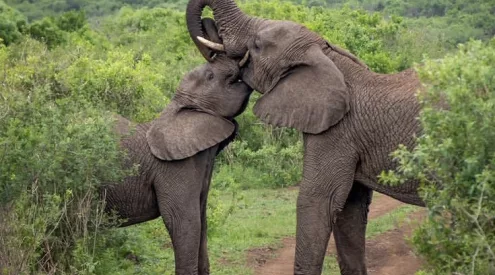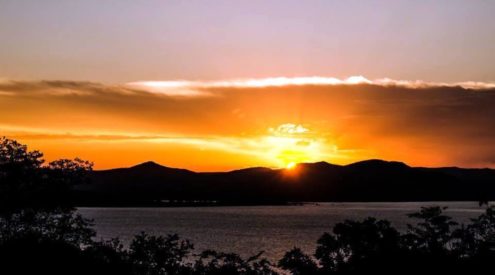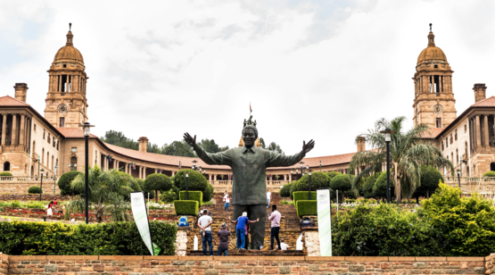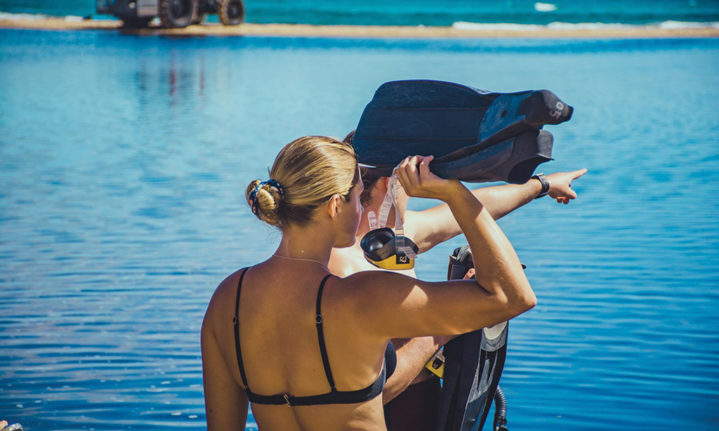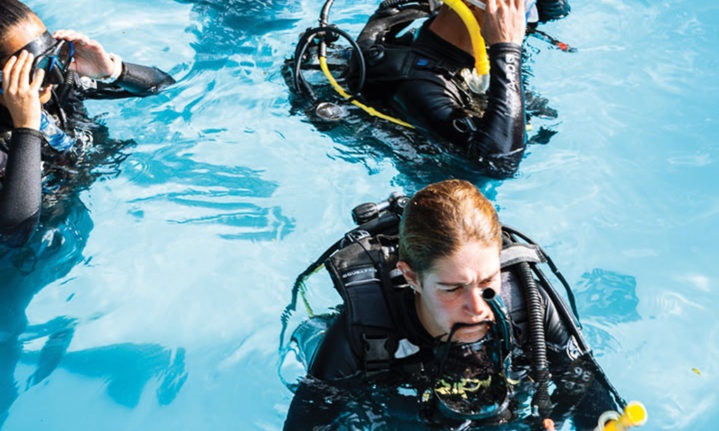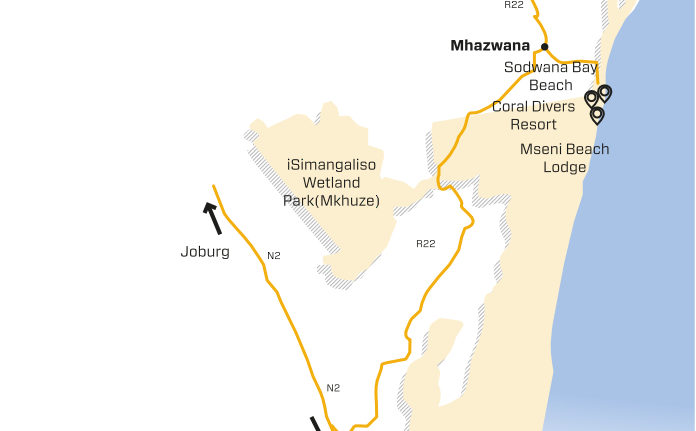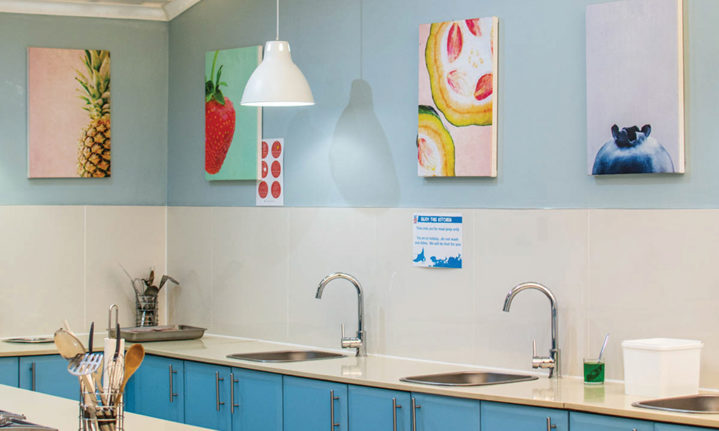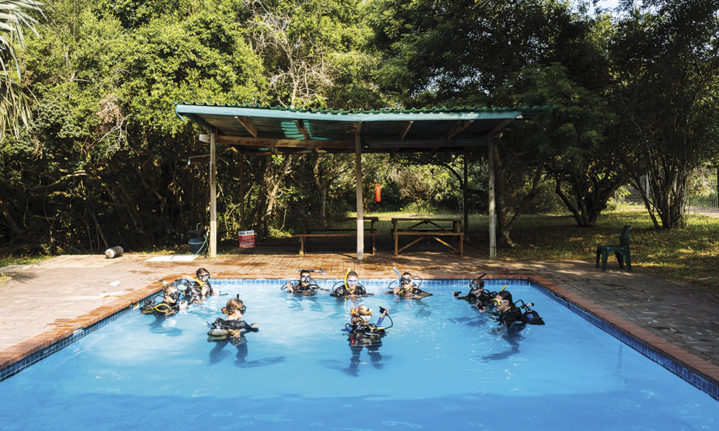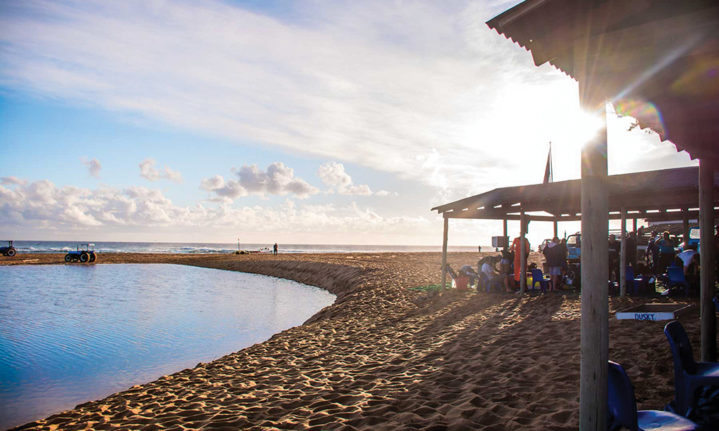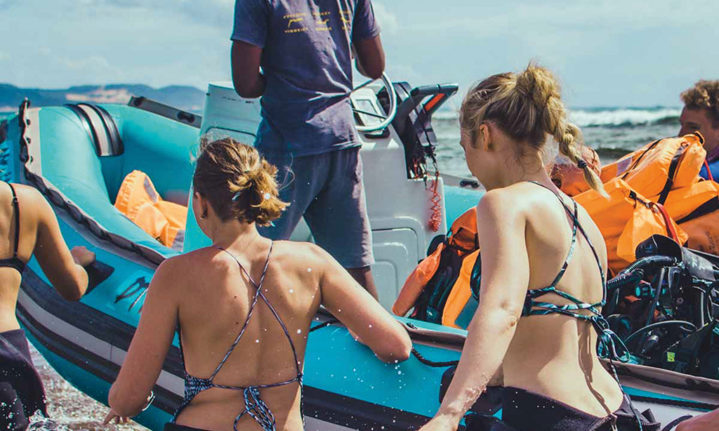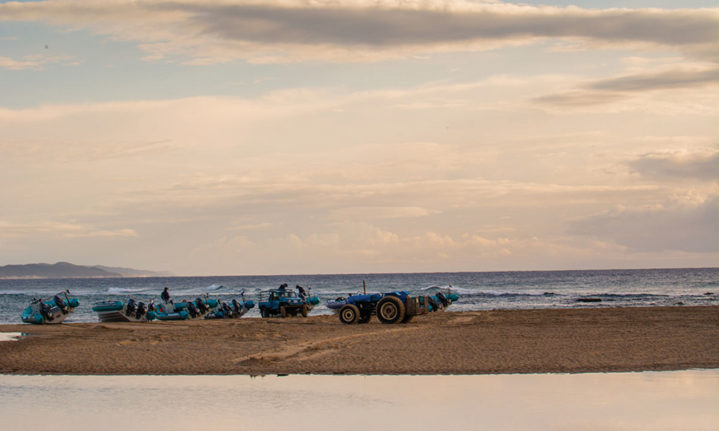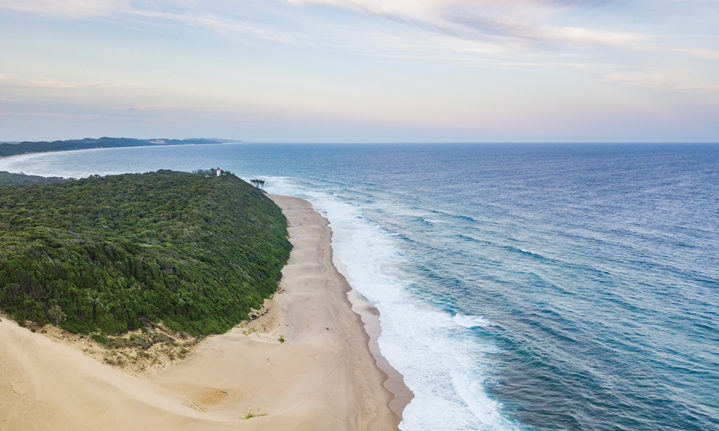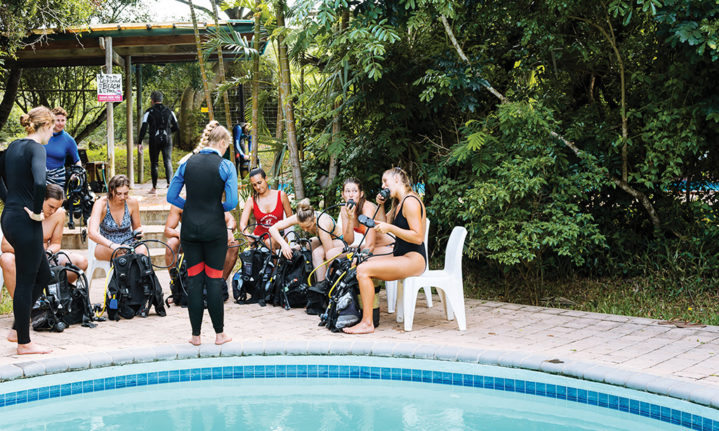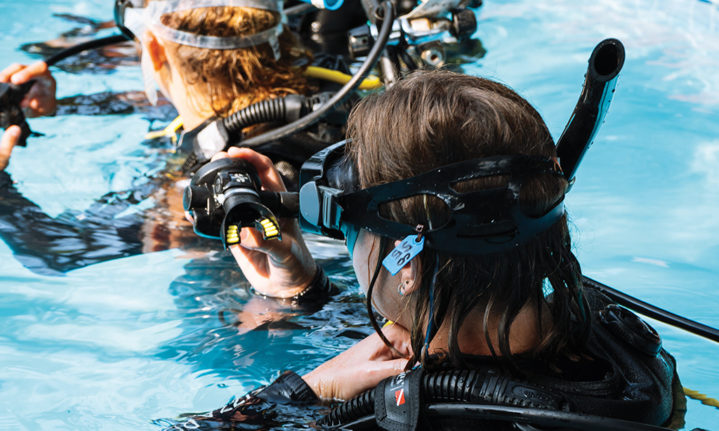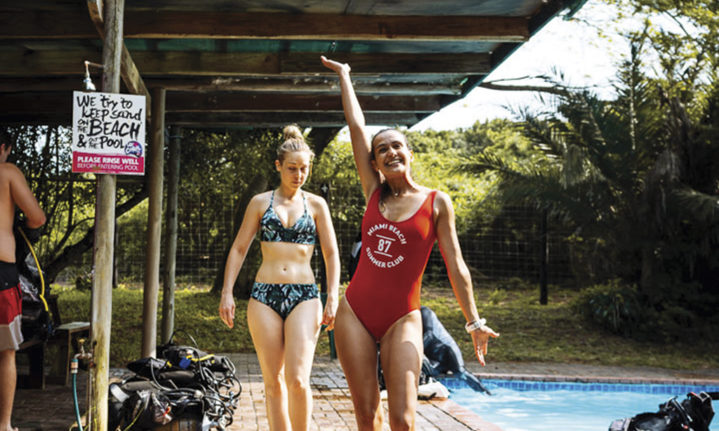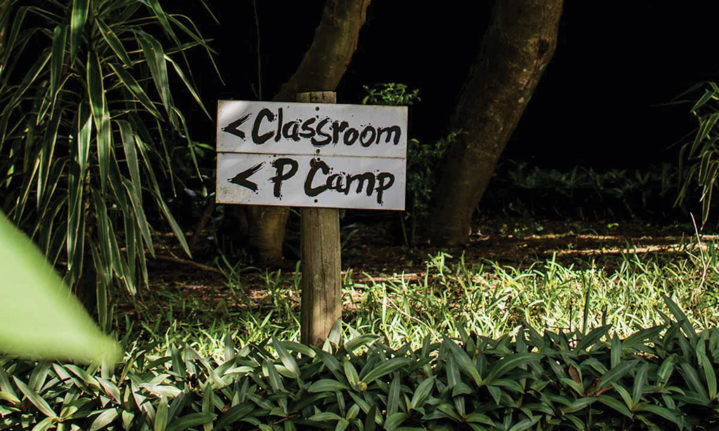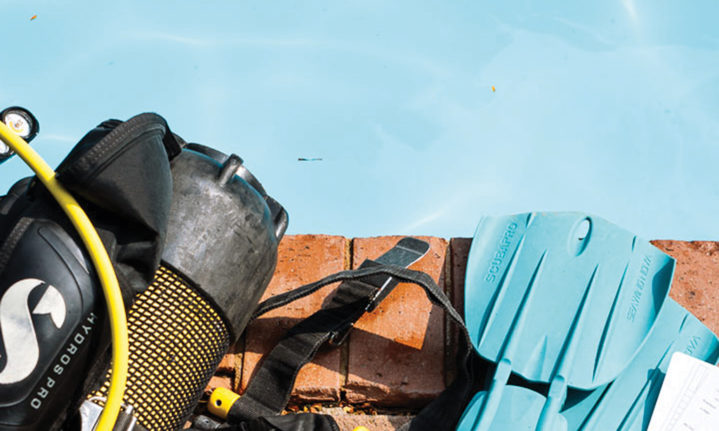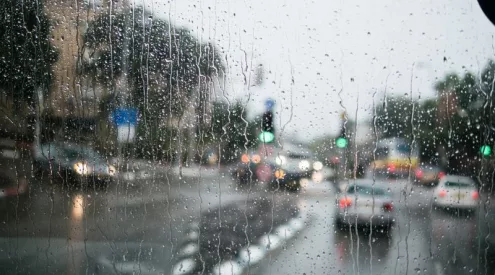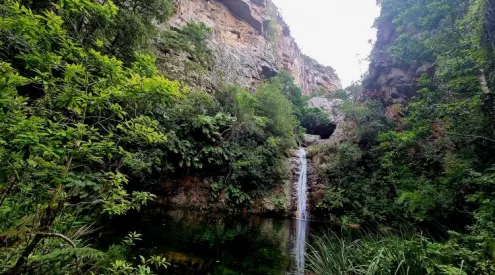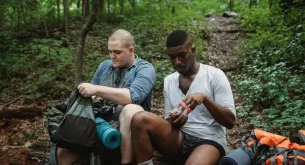WOMXN FOR WILD rallies a group of women who want to take their new-found scuba diving skills from the confines of the swimming pool to the vast Indian Ocean.
Words & Photos: Melanie van Zyl
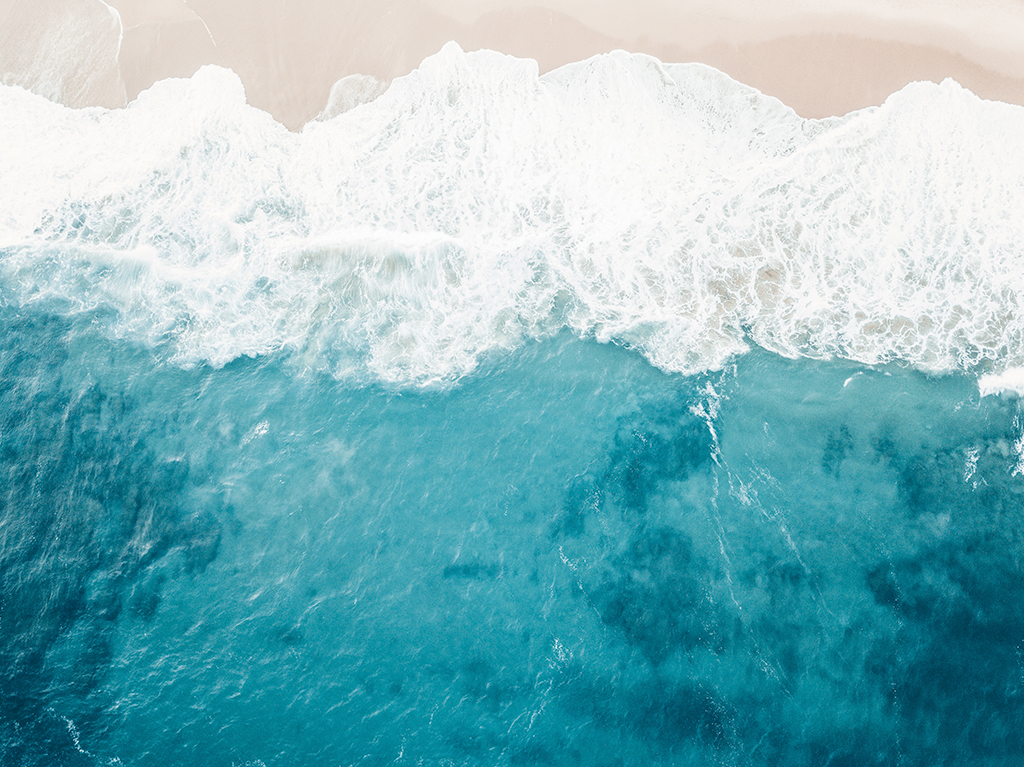
Foamy waves break onto the shores of Sodwana Bay. These are vital nesting grounds for two species of turtles. Set off to find them under the water after getting scuba diving certified.
It’s like learning to live on another planet,’ Carmen van der Westhuizen said with incredulity.
It was our second day in Sodwana Bay and I was sitting on the stoep of our log cabin at Coral Divers resort in blissful February sunshine, talking with my good friend and business partner. Contemplating what it takes to explore the ocean after her first swimming pool session on the PADI Open Water Diver scuba course, Carmen continued. ‘You have to learn everything all over again. How to breathe, how to see, how to walk, how to survive,’ she mused while sorting out her plastic crate of sopping wet scuba kit. She had a valid point, but it is a little ironic.
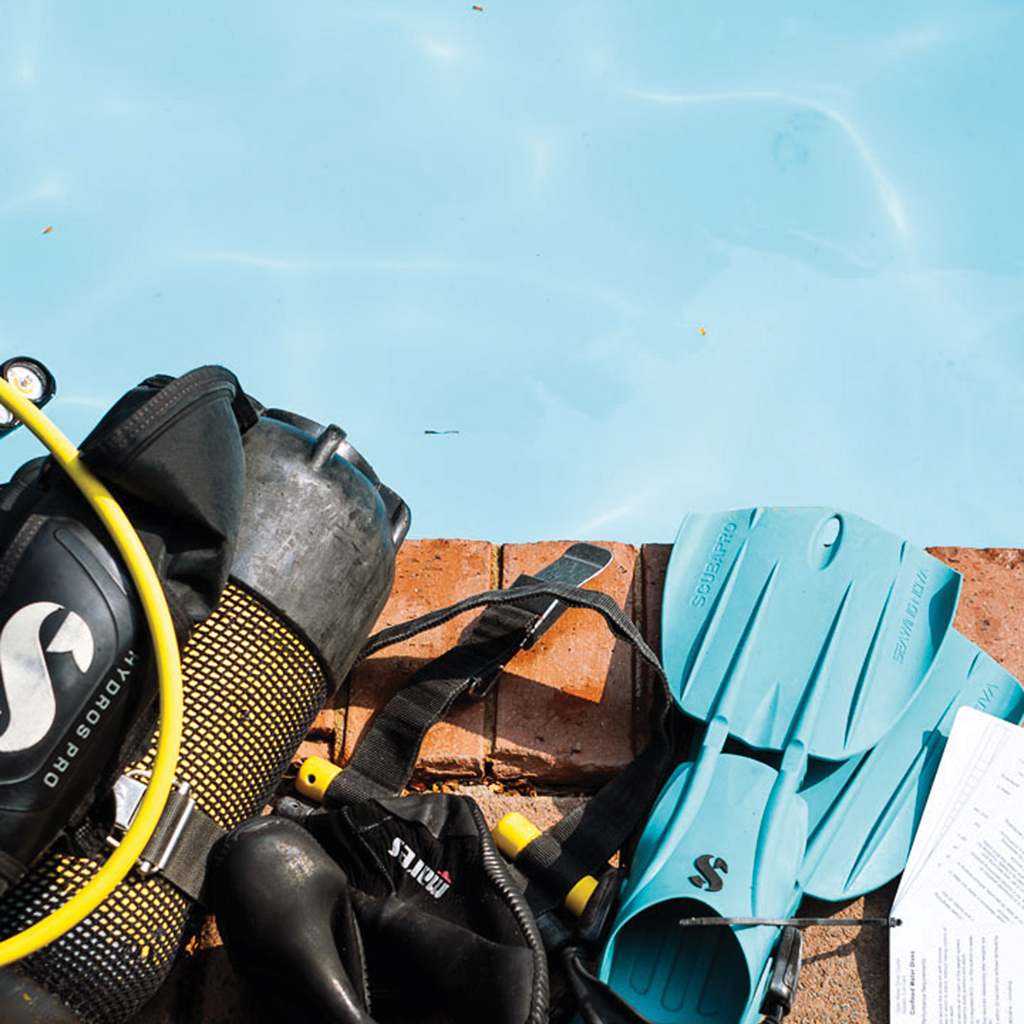
The ocean is our planet. Us landlubbers inhabit just 30 percent of Earth, but our globe is covered primarily by saltwater. Of that, roughly 20 percent of it is visible to us at the surface. The other 80 percent lies somewhat ominously below the waves.
I was lucky. My partner has been scuba diving and holidaying in KwaZulu-Natal’s Sodwana Bay since he was a laaitjie, and his family returns almost every December. It didn’t take long for me to want to peer under the curly curtains, too. Four months after we started dating, I dropped down on my first scuba dive with Coral Divers resort and I have never looked back (or should that be up?).
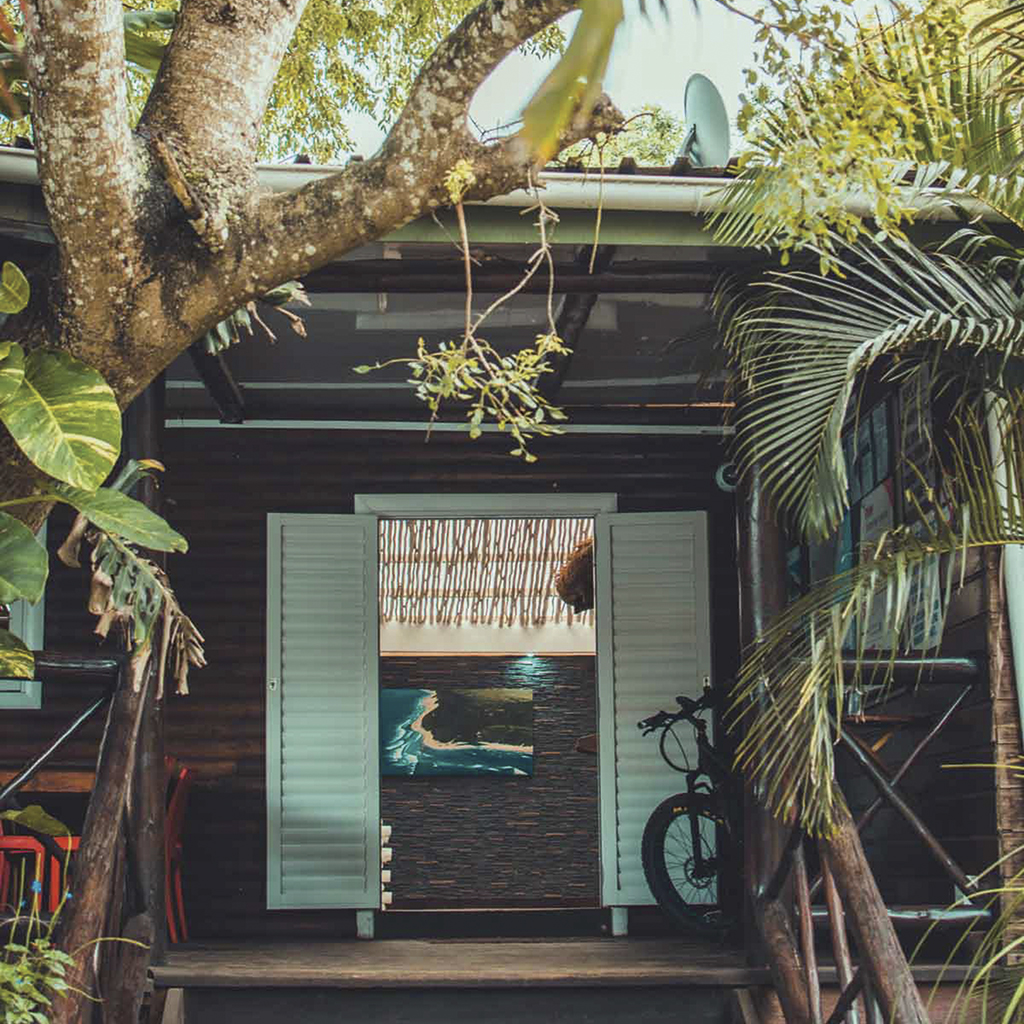
The inviting entrance to the main area of Coral Divers Resort.
Carmen has always wanted to plunge below, but couldn’t find the right outdoorsy friends keen enough to tackle the course with her. It’s one of the reasons she dreamed about a platform like Womxn for Wild. We started an experience business that builds ways for eco-conscious women to immerse themselves in Africa’s wilds without fear or prejudice. Carmen and I aim to be those infallible adventure buddies.
Step one? Cook up the trip.
Carmen wanted to learn, so surely other women would too? Plus, I was more than happy for an excuse to dive the days away while everyone worked through the five-day PADI Open Water Diver course.
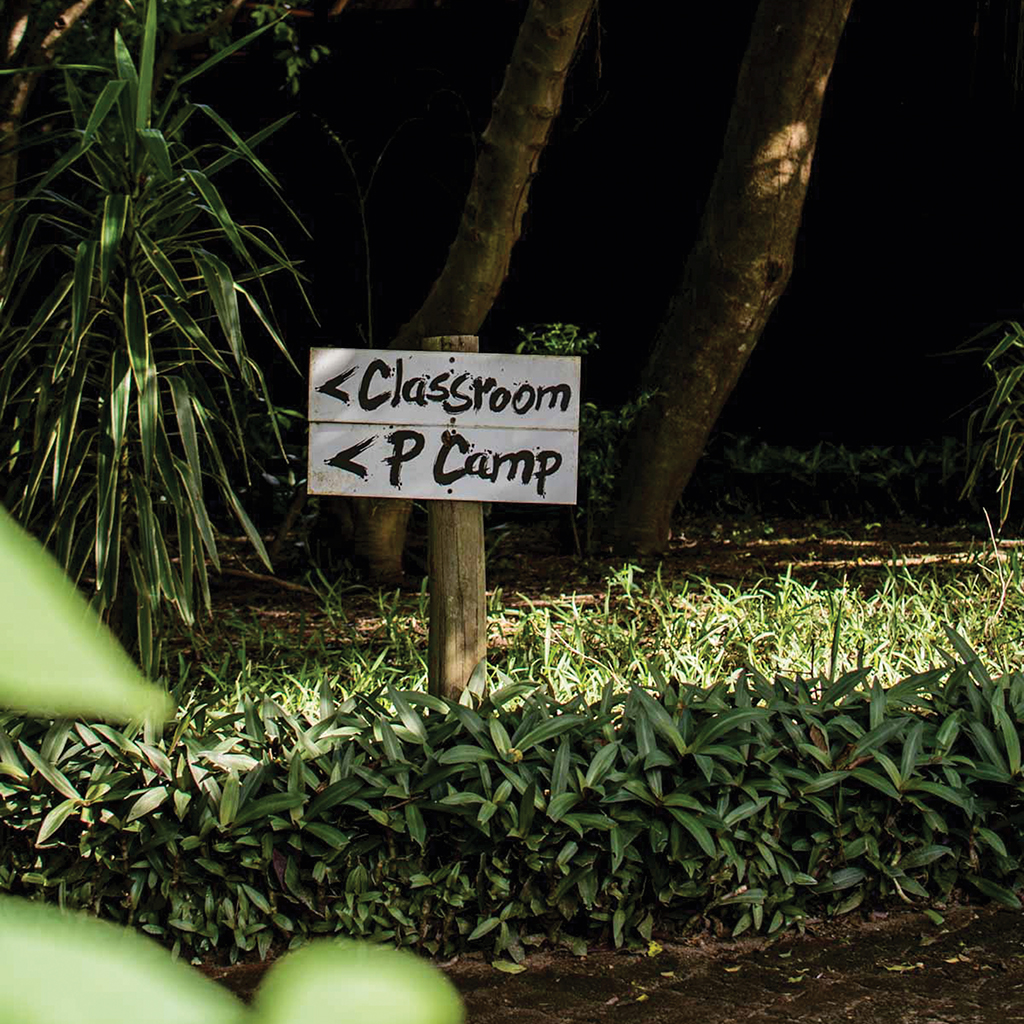
Coral Divers Resort is ideally geared to teaching scuba diving with classrooms and self-catering facilities. The PADI 5 Star Resort and Dive Centre has been family-run and owned for over 25 years.
Step two? Prioritise safety.
We chose Coral Divers resort for a host of reasons. The biggest advantage? It’s one of the only dive schools inside the iSimangaliso Wetland Park, so there’s no gate admin when getting onto the beach in Sodwana Bay – and there’s freedom to roam around the resort and surrounding coastal forests.

Each scuba diver gets their own sanitised crate of kit for the duration of the course.
Step three? Learn to dive, duh.
Coral (as it’s affectionately nicknamed) is also a pretty and professional stay. The established centre ranks as a PADI five-star Instructor Development Centre and Gold Palm resort. There’s a choice of cute cabins, basic tents (with proper beds, though) and well-kept communal ablutions, plus a free shuttle available on the hour to take you (and your very wet wetsuit) to the beach and back for dives. Last but not least, it’s got an acclaimed learn-to-dive programme with female dive instructors. Our in-depth research told us the beers here are cold, too…
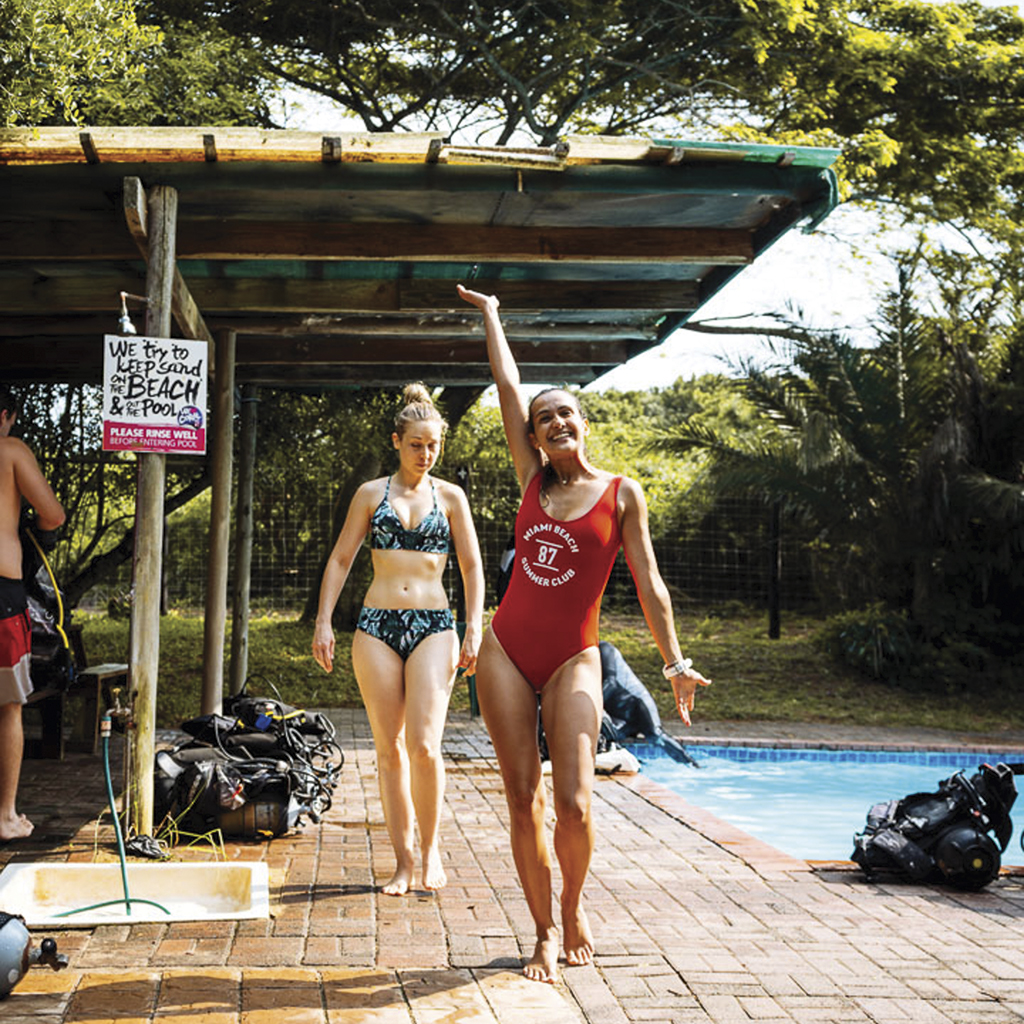
Two eager scuba divers in training.
Step four? Mythbusting.
If you ever thought scuba diving was sexy, squeezing into a tight wetsuit will quickly dispel that notion. Likewise, learning to breathe underwater can be taxing. The PADI Open Water Scuba Diver course consists of three segments: confined water dives, knowledge development and open water dives. This means time in the classroom listening to American voices drone on for a bit, learning how to kit up and submerge in the swimming pool to practise those essential underwater skills, then prove you can do it all again under the big blue. Our all-women group must then do a multiple-choice quiz and obtain at least 75 percent to pass.

We filled out log books with water depth, temperature and conditions to document each underwater journey
Step five? Assemble a crew.
The party numbered just six. A motley squad from all over South Africa – one from Plettenberg Bay, another from Cape Town, two from Johannesburg and two from the windy city, Gqeberha, but all eager to inspect the Indian Ocean, perhaps naively so.
The PADI Open Water Scuba Diver certification allows you to dive down to a maximum depth of 18 metres. There are particular techniques you have to master to complete this training. These include learning to assemble your underwater air jacket (or buoyancy control device) and breathing apparatus (or regulator) to your oxygen tank, not calling your mask goggles and fins flippers, and practising emergency procedures.
Essentially, this course takes you through every worst-case scenario. What to do if your oxygen tank cuts off? What to do when you find yourself lost underwater? Or without a buddy? What to do when your mask fills with water? The most unpleasant of all these tasks has to be this mask-clearing.

The first part of the PADI Open Water Course happens outside the water. Here students get familiar with the gear and learn to kit up
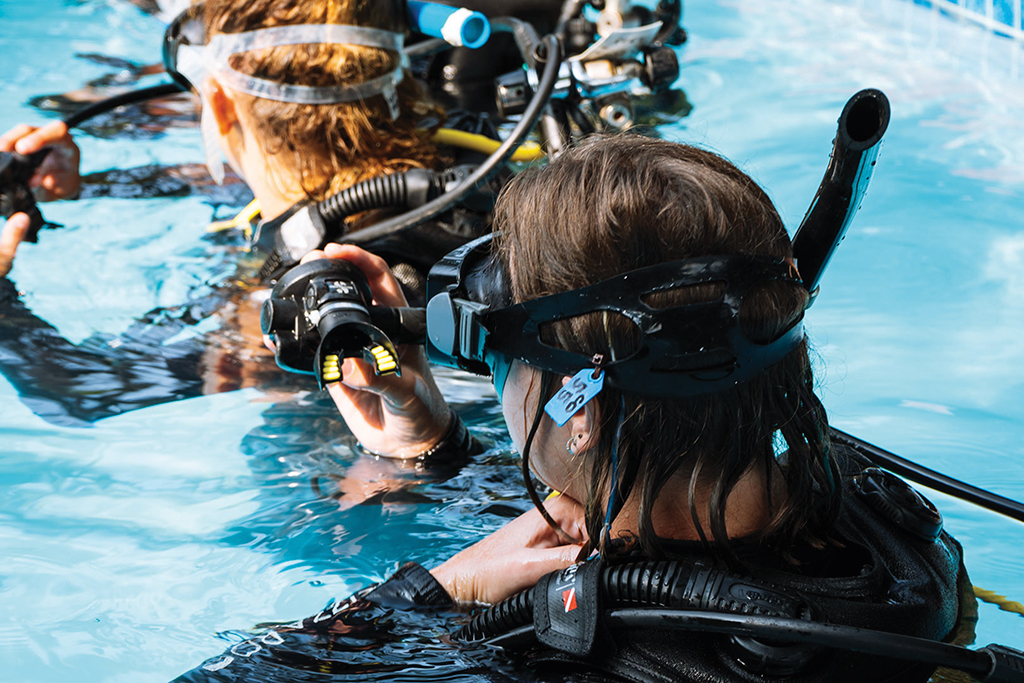
Final regulator checks before dipping into the pool.
Step six? Fearless fun.
There was plenty of laughter and chuckles at the wheezing sounds of exhaling through a foreign mouthpiece and collective grief at having to pull off the mask underwater. Each person deals differently but most calmly breathe through the shock, then replace the eyewear again, blowing it clear to see anew.
I remembered that I did not handle it so eloquently. During this ghastly section of the certification, I fired up through the water, gasping with distress at the sensation. Despite the regulator firmly plugged into my mouth, I discovered with horror that removing a mask somehow made it hard for me to breathe with water sitting inside my nostrils. It took time and practice to feel comfortable at the idea of my mask coming off under the sea.
The group also showed trepidation at taking these lessons into the ocean.
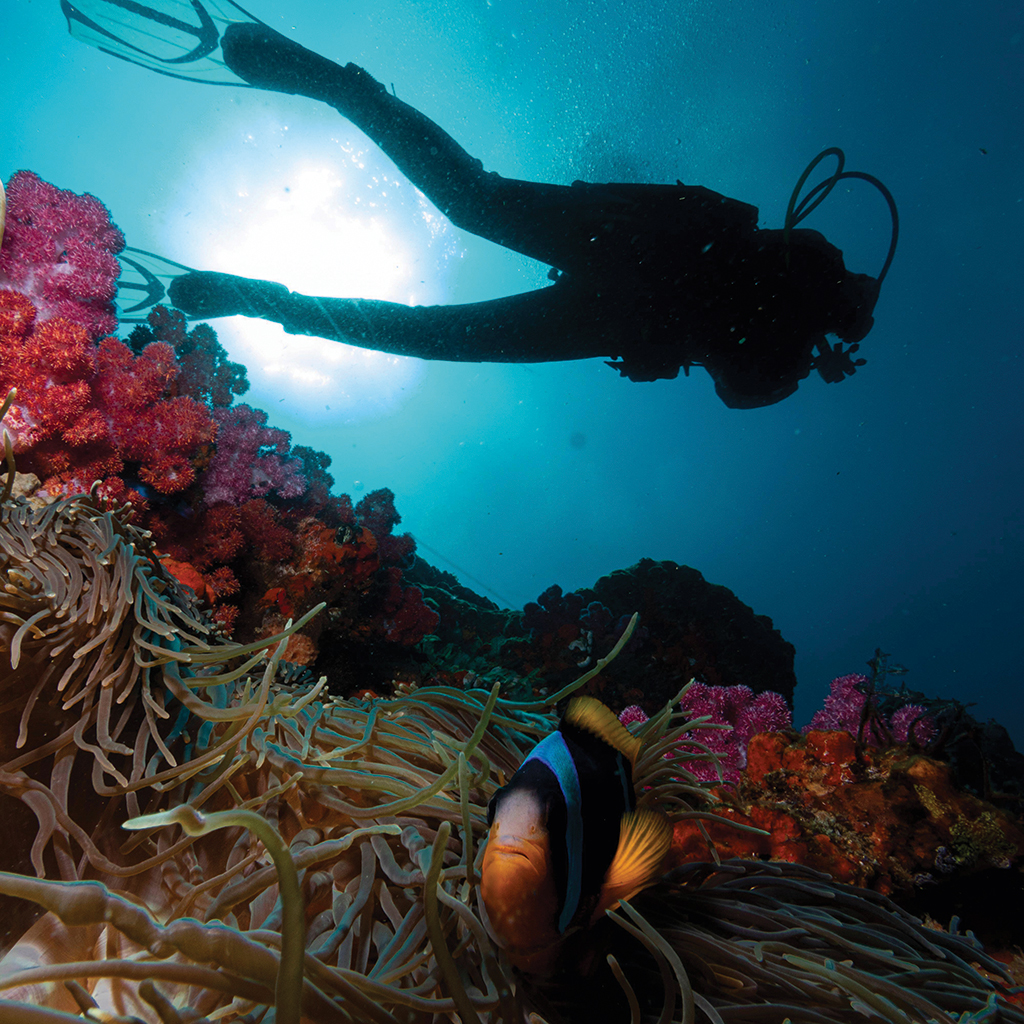
Most Open Water dives in Sodwana Bay occur along the sites at Two Mile Reef. The reef begins just outside the main bay and stretches almost 2km northwards, running parallel to the coast. The name comes from the distance you’ll travel from shore to reach the dive sites.
Step seven? Let the universe conspire.
The idea of sighting a shark on the first dive especially riled the team. Justly, the cosmos delivered one. I joined their first dive into the ocean, and a glossy white tip shark glided between us towards the end of the dive. Once everyone witnessed the grace of this enchanting fish underwater, they surfaced far less fearful.
What they didn’t realise was how exhausting – and famishing – swimming under pressure is. On most days, self-catering lunch plans were shelved in favour of gooey pizzas.
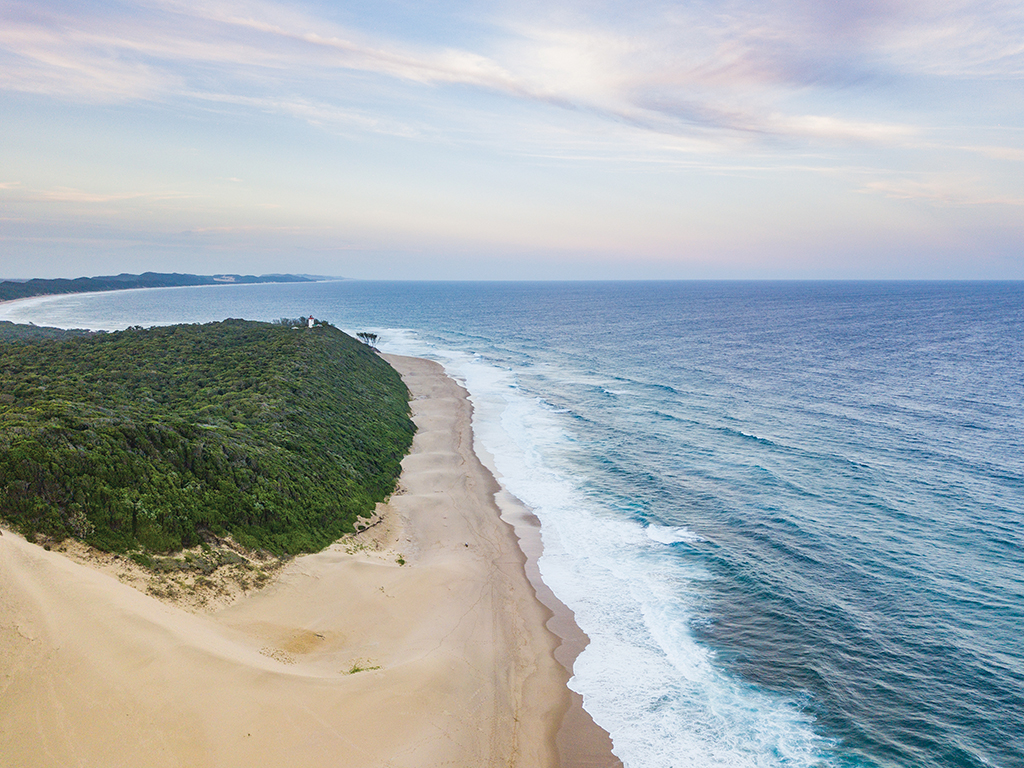
An aerial view from Mseni Beach looking north towards Mozambique. Can you see the lighthouse?
Step eight? Anticipate.
Carmen and I did all the planning, prep, booking admin and predicted such dietary details so that our crew could focus on smashing that certification. From the start, our itinerary included a pizza lunch at neighbouring Mseni Beach Lodge for cheesy indulgence and a change of scenery.
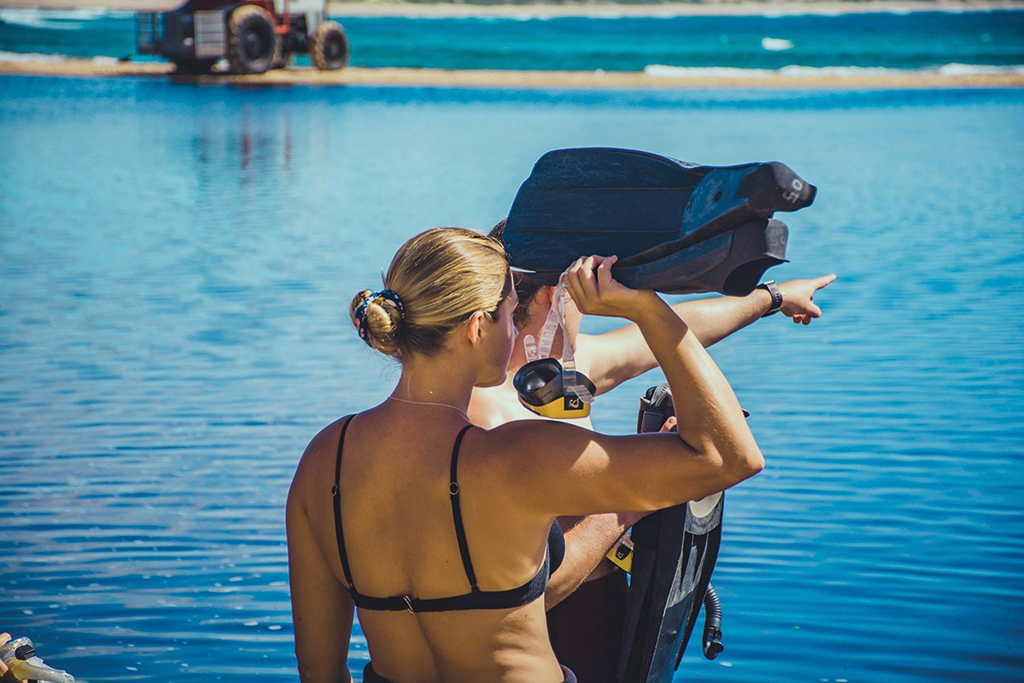
Divers suss out the wave conditions before boarding the boat.
Step nine? Educate.
I’ve always been conservation curious. My parents blessed us with camping trips in Kruger, beach excursions to Cape Vidal, weekends in the Waterberg bushveld. It’s led me to complete a Field Guides Association of Southern Africa Field Guide course and I’m firmly down the road to twitcherdom in the birding department. Scuba diving opened up an unimaginable new appreciation for travel and wildlife. Of course, there is the colour and obvious delight in sharks, turtles, rays – the Big Five of the animal ocean – but I’ve had to learn to slow down to spot shrimps and sharpen my eye for nudibranchs. Much like birding has enhanced my safari experience, dipping my eye beneath the waves has identified a new realm for me: Africa’s wild and under-appreciated underwater world.
Diving renewed my own personal environmental mission, so we worked every detail to ensure this scuba experience was fun and effortlessly educational, too. For example, each participant got a tub of reef-friendly sunscreen. Many sunscreen ingredients (specifically, two ultraviolet filters, oxybenzone and octinoxate) damage fragile coral reefs through coral bleaching, deformities, DNA damage and ultimately coral death when sunscreen washes off beachgoers and divers.
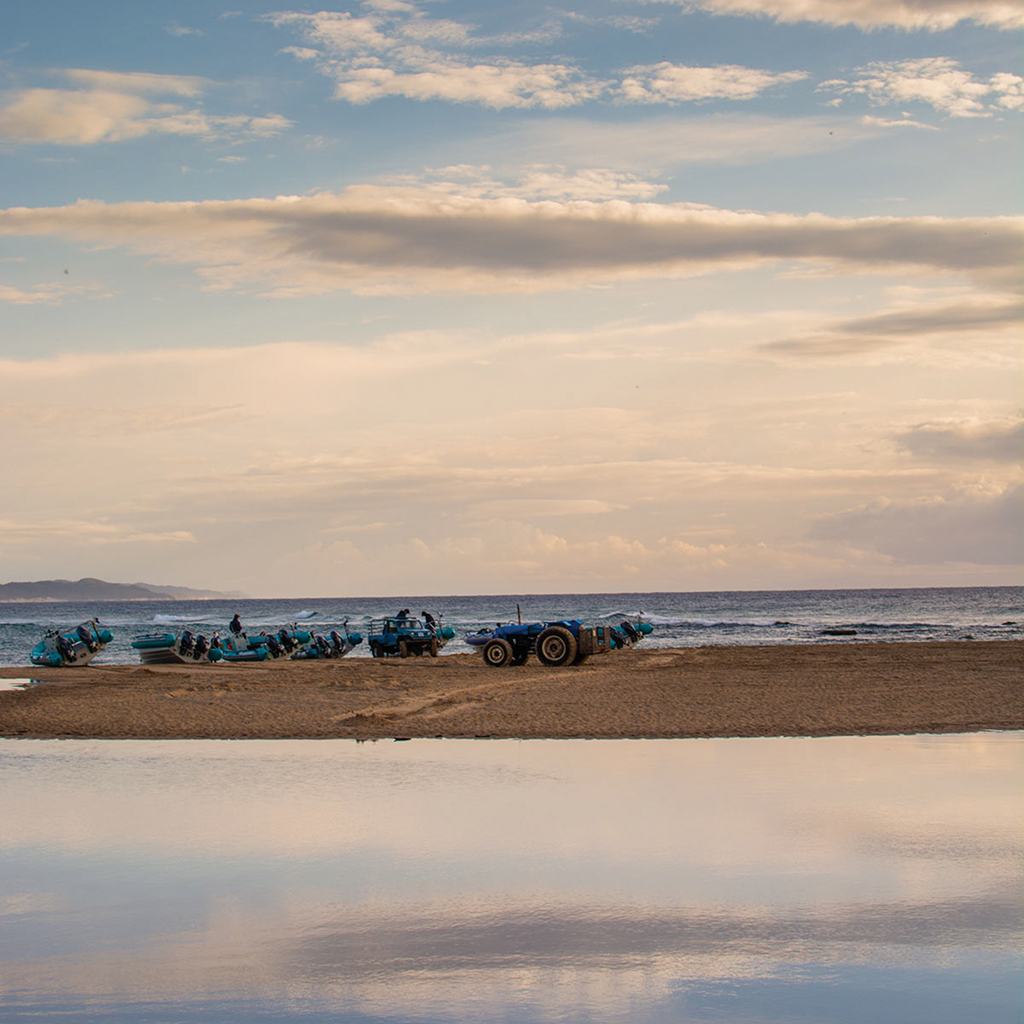
Boats line the shore at sunrise before the first departures.
Step 10? Celebrate.
This trip culminated with a rollicking beach picnic at Mseni Beach (a little further north of Sodwana Bay and Jesser Point). After passing the final quiz and qualifying, everyone snacked and cheered and watched the sun go down with full tummies, fuller hearts and fabulous new friends. Just that morning we saw turtles, rays, eels, angelfish and lobsters – and more sharks, too! What an introduction to the beautiful blue.

Getting used to the dive kit takes… well, some getting used to but all the skills are nailed down in the pool beforehand.
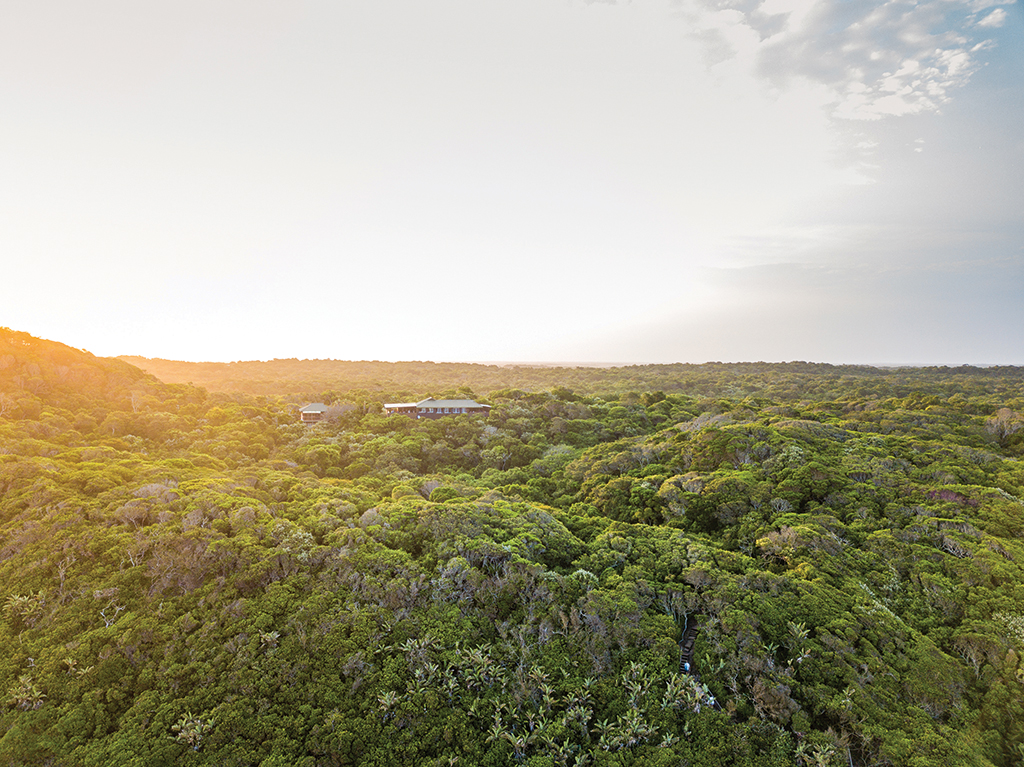
Mseni Beach Lodge has an upper level restaurant with great views and better pizza

Divers lend a hand to the skippers by steering the boat into the waves before leaping aboard.
Fascinating facts
• Why Sodwana? This reef is believed to be about 80 000 years old and home to 1 200 species of fish (compared to 1 800 on the Great Barrier Reef, that’s pretty impressive) as well as other incredible invertebrates, turtles, rays and even sharks.
• Sodwana Bay falls under the iSimangaliso Wetland Park and is a Marine Protected Area (MPA). It is currently South Africa’s only Unesco marine World Heritage Site and it shares an MPA with Mozambique too, making it Africa’s largest transfrontier MPA.
• South Africa has the oldest turtle monitoring programme globally, clocking in at just more than 50 years. Travellers can track turtles with registered guides, such as Pete Jacobs from Ufudu Turtle Tours, in Sodwana between October and March, and learn more about this curious marine reptile. ufuduturtletours.co.za
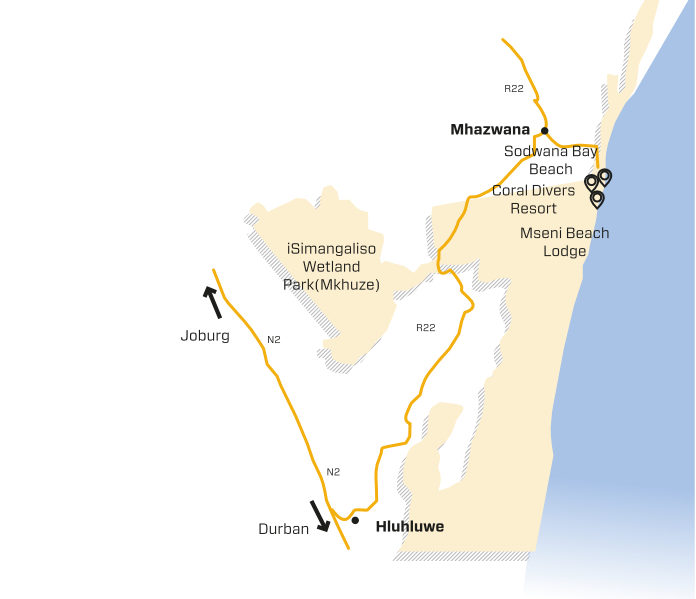
Trip Planner
Getting There
From Johannesburg, take the N17 East past Springs. Drive through Bethal and Ermelo. The N17 becomes the N2 South and continues through the towns of Piet Retief and Pongola before you get to Hluhluwe town (don’t trust the Google Maps routing past Jozini).
From Durban, get on the N2 north and drive past Ballito and Richards Bay before reaching the Hluhluwe turn off.
From Hluhluwe, drive straight through the town and turn onto the R22 for about 80km to reach the town of Mbazwana and on through to the iSimangaliso Wetland Park gates into Sodwana Bay.
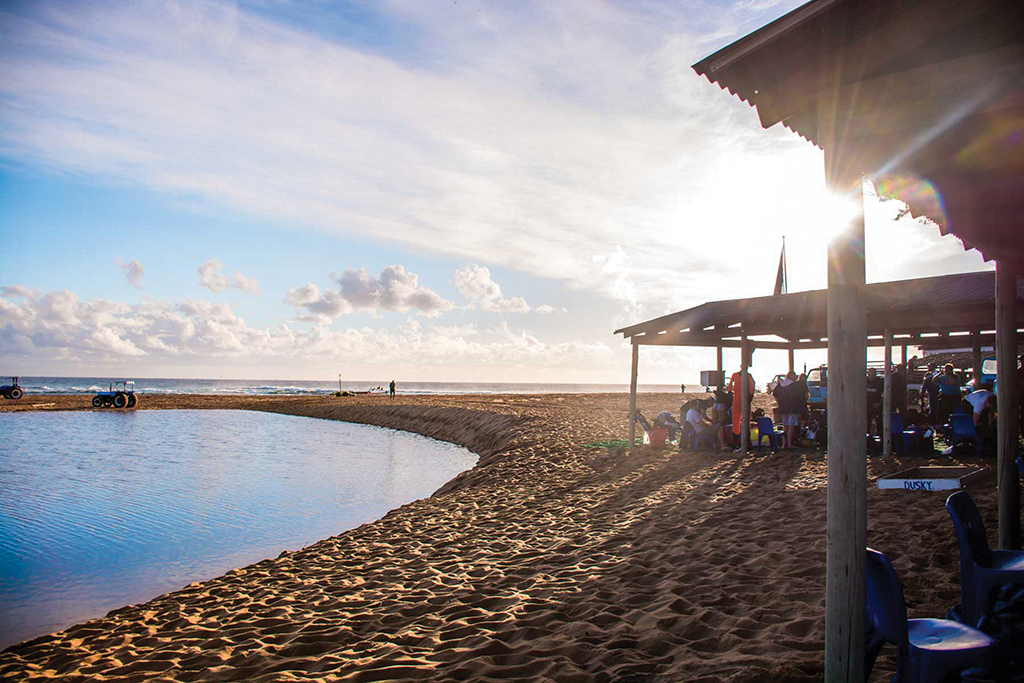
Coral Divers Resort’s kit- up area sits on the beach but in welcome shade.
The PADI Open Water Diver course
This certification caters to those aged 10 and up. The course, which allows you to dive to 18m (or 12m for juniors), comprises five theory and five pool sessions, an exam and four qualifying open-water dives. We went in February because it’s low season, the weather is fabulous, the water is warm, and the beaches are typically quieter. There’s also the advantage of possibly seeing turtle hatchlings return to the sea. The course itself costs roughly R4 620pp.
033 345 6531, coraldivers.co.za
Where to start DIVING
Can’t make it to Sodwana? Find where to begin your Padi Open Water Diver course in your region at Padi.com

Padi open water divers course
The crew
Are you for scuba? You don’t have to do it alone. The Womxn for Wild travel package includes a festive welcome dinner, all park fees, dive permits, course material and coaching, accommodation, pizza lunch and celebratory beach picnic, plus a goodie bag filled with local eco-educational products. We’ll be back in February 2022 with tiered packages from R6 500pp. womxnforwild.co.za
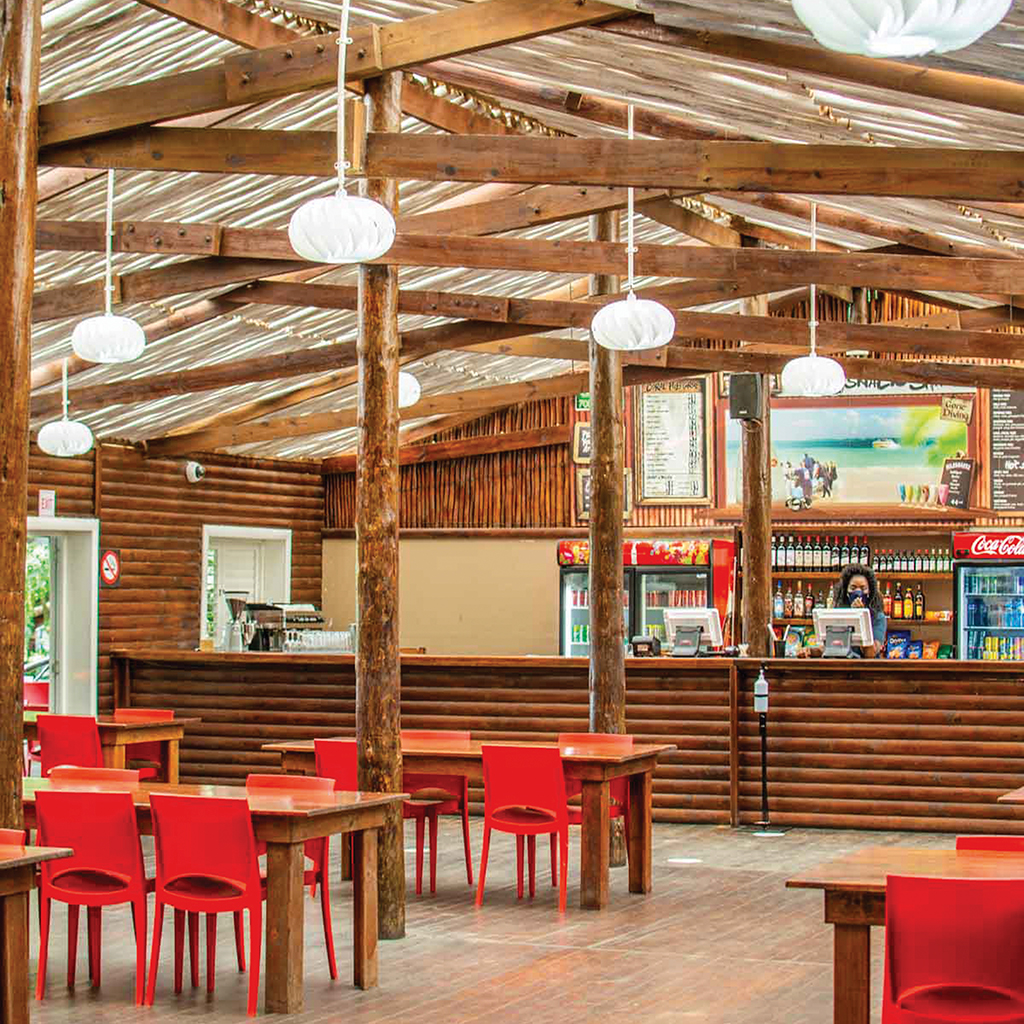
Coral Divers
Eat Here
Coral Divers has full self-catering facilities and personalised storage fridges. Cutlery and crockery are provided in the kitchen, plus a two-plate stove (no ovens). A fire is also lit on request in the boma braai area at 5:30pm if you want to bring some chops.
The Snack Shack is the on-site restaurant and bar. There’s a cappuccino machine, pizzas, milkshakes, wraps, burgers and basic seafood. Takeaways are available until 8pm. Coffee is available from 6am for early-rising divers.
Mseni Beach Lodge also sits inside the iSimangaliso Wetland Park and has a sublime cocktail deck with ocean views. It’s a five-minute drive from Coral Divers.
087 803 5878, mseni.co.za
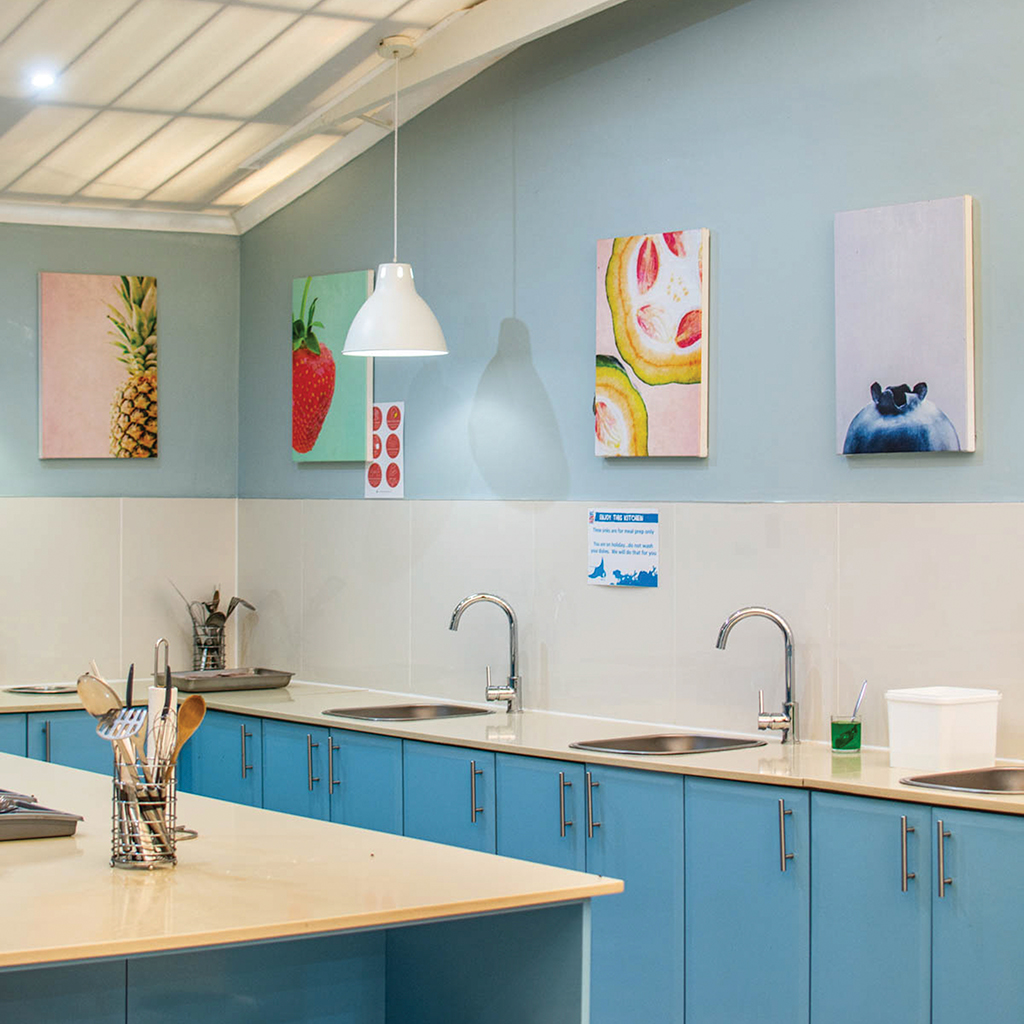
Coral Divers Resort
Stay Here
Coral Divers has cabins with private bathrooms and basic safari-style tents with shared ablutions. Guests can choose to self-cater in the well-equipped communal kitchens or include meals from the restaurant in their stay. Check into a tent from R200pp or an en-suite cabin from R600pp. 033 345 6531, coraldivers.co.za





